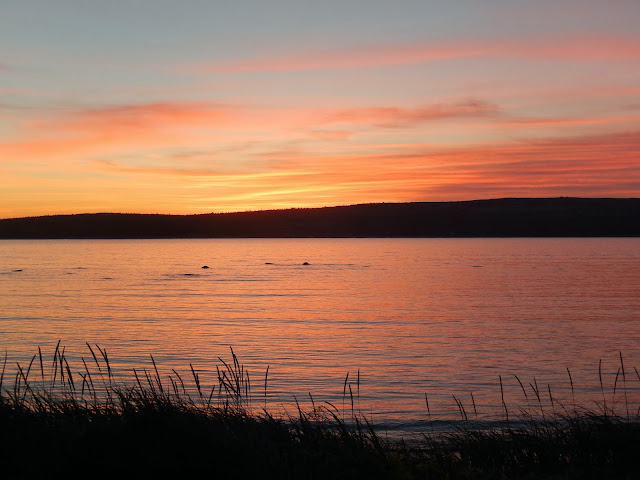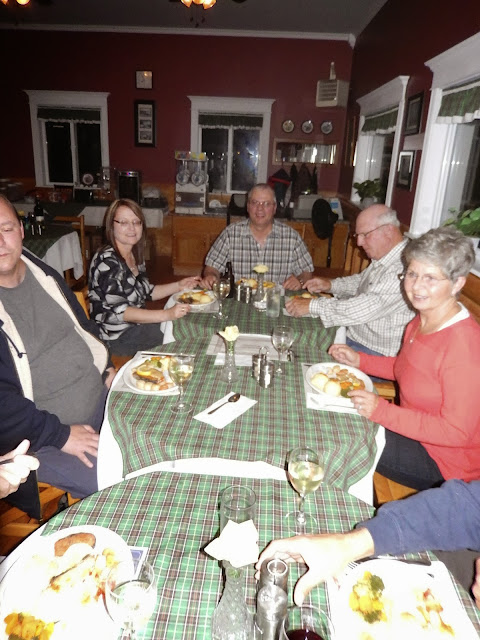Private roadsides enterprises here in northern Newfoundland
fascinate me. Without warning, there’s a
beat-up fence, just a few rails, really, in which is a patch of potatoes, with
maybe some carrots or turnips alongside.
There’s no “public” or “private” land; it’s all available. Same is true for wood lots. People cut their wood and leave it stacked,
sometimes quite beautifully, right along the road, along with the
boxes-on-sleds that they use to haul the wood from the forest with
snowmobiles. No one takes anyone else’s
stuff. Neat!
Spent part of the day in the ER in St. Anthony,
Newfoundland, after spotting a bullseye rash last night. This is after
having spent part of last Tuesday in the ER in another small town because I
thought I had a urinary tract infection. The latter has been bothering me
for more than a month, since before we began our trip, and I'd already
completed three rounds of antibiotics, to no improvement.
So it turns out I most likely have Lyme disease, and today
I hopefully got the right antibiotic. We're going to continue our trip as
planned. The rash actually helped sort things out a great deal.
And it turns out they've never seen Lyme disease here
before; I was quite the phenom. Anyway,
I think things are finally on the right track, all in all, a very good birthday
present.
Then…the sun came out!!
The ER visit kind of cut the day, so we hung out in St. Anthony, seeing
the sights and enjoying a fine lunch on a high point with stunning views.
Allen and this husky just loved each other, and we really enjoyed seeing the shrimp boats. Our plans to return to the point for hiking were thwarted when the entire downtown was evacuated due to a couple of chlorine barrels that had fallen from a truck and began leaking. Instead, we headed back to Raleigh for an evening walk in the light of a stunning sunset…and no wind. But temps couldn’t have been out of the 30’s. All in all, a memorable birthday for me.
Again, the tenacity of these plants growing in nothing but stones at water's edge is impressive. I also loved the scarlet red runners this plant shoots out.





















































